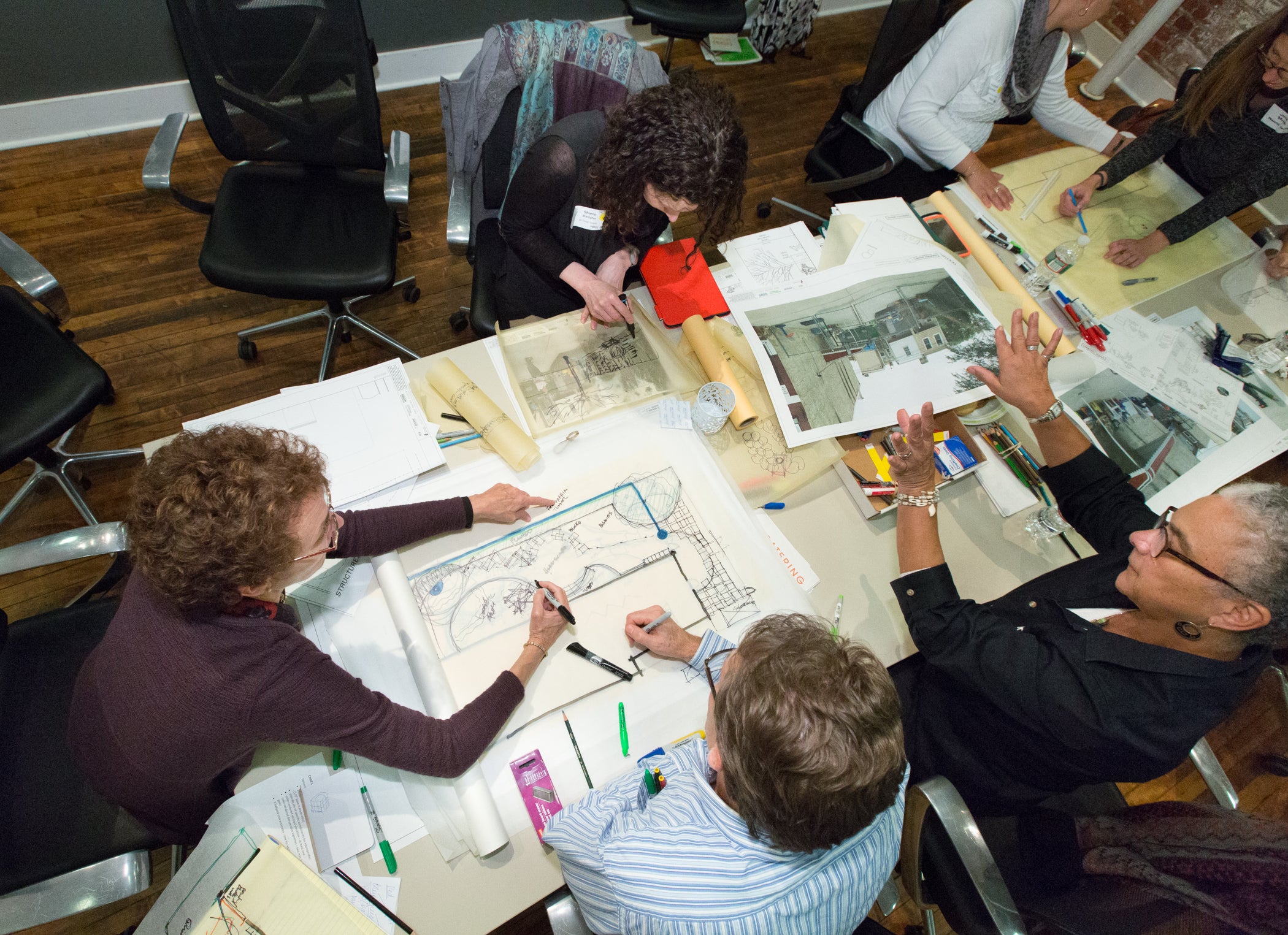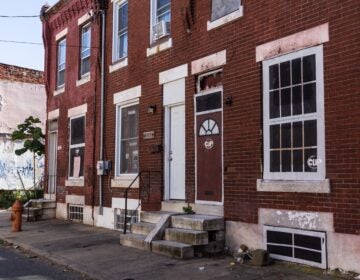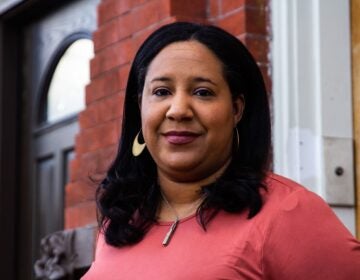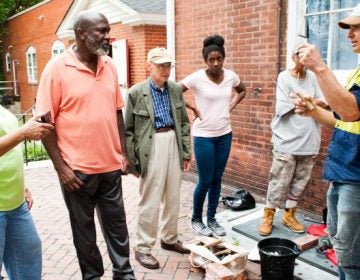Praxis Dialogues: Strengthening neighborhoods through public interest design

On December 1, PennPraxis and PlanPhilly will kick off Praxis Dialogues, the first in a series of public conversations about the notion of “the public good” in design practice, and how it informs and affects the design and use of spaces in the public realm. To get our wheels turning in advance of this event we’re sharing commentaries from participants. Last week Randy Mason, executive director of PennPraxis, teed up this conversation. This week Beth Miller* shares her perspective on the power of public interest design, from her vantage as executive director of the Community Design Collaborative.
Philadelphia is aglow with positive press and investments in the public realm. Just last week, Philadelphia was designated as a World Heritage City– the latest in a string of positive trends that have put us in the international spotlight.
After six decades of shrinking population, Philadelphia’s population is growing. With the leadership of Mayor Michael Nutter, Philadelphia’s city agencies have rolled up their sleeves to set the stage and provide forward thinking strategies to make Philadelphia a better, more resilient, and more equitable place for residents to live, work, and play.
Yet amidst all of this progress, Philadelphia’s tale of two cities will continue to challenge the new administration of Mayor Elect Jim Kenney: 26% of our residents live below poverty level; our neighborhoods are riddled with nearly 40,000 vacant lots; and Philadelphia has the highest per capita vacancy rate in the United States. With its limited resources and constraints, the public sector admits it cannot do it all. As a city, we still have “wicked problems”* that are in desperate need of creative, collective solutions for the public good. How can design professionals be of service?
“You are most distinguished by your thunderous silence and your complete irrelevance.” – Whitney M. Young, Jr., AIA Convention, 1968
In 1968, Whitney M. Young, Jr., a respected civil rights leader, excoriated the audience at the American Institute of Architects Convention with his keynote address. His words were not comforting, nor were they meant to be. They were a call to action.
In response, a network of community design centers was created to support more equitable decision-making in the design process, especially for those who have less power and are often left out. Community design is the process of establishing early and active partnerships between design professionals, community residents, and institutions.
In order to serve the public good, it is vital for citizens to participate in discussions, identify opportunities, deliberate with stakeholders, establish priorities, create solutions, and share responsibility. Grassroots participation requires more time and tending to than top down remedies do, but it is essential. Without citizens at the table, all the good will and best intentions of the public sector, philanthropy, universities, and design professionals will be insufficient.
“Cities have the capability of providing something for everybody only because, and only when, they are created by everybody.” – Jane Jacobs, The Death and Life of Great American Cities, 1961
When we collaborate, we share power and earn trust. It provides a return that offers better solutions, participation and commitment. When we respect the contributions of our citizens for the greater good, we tap into all of the skills, talents, experience and expertise community members bring to the table. When we work together, we gain a better understanding of our collective responsibility for the creation, revitalization, and stewardship of public spaces.
RECENT COLLABORATIVE PROJECTS:
New Kensington CDC, Lehigh Somerset
350 hrs, $40,075
When New Kensington CDC needed a strategy for reinvesting in an area north of Lehigh Avenue, the Collaborative created a master plan illustrating how a transit stop on the Market-Frankford Line, the vacant 1920’s Orinoka Mills complex, and an abandoned rail viaduct could be transformed into a new, vibrant neighborhood district with a linear park and neighborhood marketplace. Orinoka Civic House broke ground in October 2015. It will have 51 one- and two-bedroom loft-like units, reserved for those earning 20%-60% of the Area Median Income. On the first floor, at the corner of Ruth and Somerset, will be an airy community space and a coffee shop.
Puentes de Salud
357 hours, $30,415
Puentes de Salud is an organization that promotes the health and wellness of South Philadelphia’s Latino immigrant community providing a health clinic, adult education classes, and arts programs. Puentes wanted to bring all of its programs under one roof in office space donated by a university. In 2012, before making the move, the nonprofit asked the Collaborative to assess its space needs, flag potential costs, and develop a conceptual design for the new space.
Columbus Square Park
404 hrs, $35,058
In 2013, The Columbus Park Advisory Council came to us for help in reconsidering programming, park improvements and overall park safety concerns. Our team helped the neighborhood work with public agencies to envision a greener, more diversified park. The resulting concept reduces athletic fields and demolishes an underutilized storage building, freeing up space for a new entrance at a key corner, more pathways along with a communal lawn.
To learn more about Community Design Collaborative Design Grants, how to volunteer, apply for a grant, or participate in upcoming programs go to cdesignc.org.
The Community Design Collaborative is Philadelphia’s community design center that uses design as a tool, to encourage and sustain active citizen engagement in ways that are authentic, meaningful, and productive for citizens, elected officials, nonprofits, design professionals, funders and city agencies alike. The ideal of public good is at the heart of the Collaborative’s work. It’s the aim of every one of our engagements. We have grown to see the community design process as a neutral space that champions citizenship, leadership and participation.
Community-based groups with big ideas but little money face an inescapable Catch-22 that an idea cannot receive funding until it is on paper, and accessing funding for early design services is elusive at best. The Collaborative helps fill that gap. In 1991, the Collaborative was founded around the Design Grant as a way to increase access to preliminary design services for community-based nonprofits and leverage the pro bono services of volunteer design professionals simultaneously.
Combined, Collaborative volunteers have leveraged well over 100,000 hours of community service to a portfolio of more than 600 nonprofits. The outcomes of Design Grants are greater than improvements to a single building or specific landscape. Together, these participants champion transformation in ways large and small.
Community organizations, expert volunteers, external partners, and advisory groups work together to design buildings or public spaces that reflect a broad array of voices and are responsive to the habits, wants, and needs of the area residents. This process brings about changed values, increased awareness, and raised aspirations. It produces professionals who incorporate Public Interest Design into their own practices, citizens who better understand the complexities of design and development financing, and a shared knowledge that can help leaders address future needs. Most of all, it fosters common ground and citizens who are more connected to their community. That is a big picture public good.
Do not be silent. Be relevant.
Although design is not the only factor at play in the complex work of community development, it is a relevant tool for problem solving and civic engagement. Transparent, inclusive design and development processes work to re-knit and revive neighborhoods. Our volunteers work with communities to re-shape and strengthen neighborhoods through design.
The Collaborative will proudly celebrate its 25th Anniversary next year. Today, our mission adheres to the grassroots, social justice principles established by our founders. The Collaborative remains responsive to emerging needs identified at the grassroots level, fosters authentic civic engagement and coordinates effective preliminary design services. And none of this work would be possible without our volunteers. Collaborative volunteers make community service part of their practice and they are guided by the simple conviction that access to design is not a luxury — it is a public right.
Last year, architect Shigeru Ban received the 2014 Pritzker Prize Award for his work to advance social justice through design. Recently, Mr. Ban, much like Mr. Young, 46 years before him, took architects to task for not putting their expertise to work for a greater social good. When the AIA Convention is held in Philadelphia in 2016, will we have a different story to tell? Do not be silent. Be relevant.
Praxis Dialogues will begin its series on the public good with a conversation on December 1, from 6:30-8pm at the Kleinman Center for Energy Policy, Fine Arts Library, PennDesign, 220 S. 34th St. Free, open to the public.
*Disclosure: Beth Miller is a member of PlanPhilly’s advisory board.
WHYY is your source for fact-based, in-depth journalism and information. As a nonprofit organization, we rely on financial support from readers like you. Please give today.







